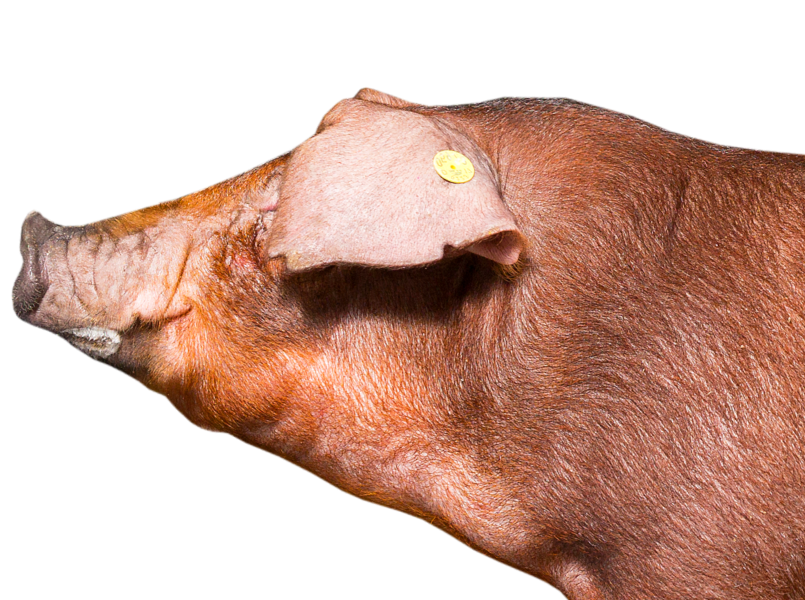Otrada Duroc is a superior
boar of Danish origin
It is the top of genetic progress in pig breeding
Get a consultation

It is the top of genetic progress in pig breeding

Purchase of the sire line Otrada Duroc boars with excellent performances is one of the most straightforward and simple ways to optimize the cost of 1 kg of meat at the commercial production level. Individual testing on the Otrada elite farms allows identifying the potential of each boar and confirming the effectiveness.
The top 10% of tested Otrada Duroc boars with guaranteed indexes belong to the Profit+ and Profit Max categories and reflect the quality of the animals.
We are ready to supply the high-index Otrada Duroc boars and semen thereof to your pig production facilities.
Get a consultation| Parameter | Top 10% |
|---|---|
| Index after test | 148 |
| Weight at 140 days, kg | 130 |
| Live daily gain, g/day | 905 |
| Test daily gain (35-130 kg), g/day | 1 370 |
| Feed conversion (35–130 kg), kg/kg | 1.78 |
| Loin depth, mm | 76.9 |
| Back fat depth, mm | 10.7 |
| Parameter | Top 10% |
|---|---|
| Index after test | 148 |
| Weight at 140 days, kg | 130 |
| Live daily gain, g/day | 905 |
| Test daily gain (35-130 kg), g/day | 1 370 |
| Feed conversion (35–130 kg), kg/kg | 1.78 |
| Loin depth, mm | 76.9 |
| Back fat depth, mm | 10.7 |
The genetic potential of elite animals is calculated based on detailed data from elite farms. Therefore, we collect the information with maximum accuracy, and only use semen from tested animals for the production of boars.
We select boars for testing and assess each of them on a regular basis, in order to be confident in the animals’ quality.
It is important to understand the impact of GNX program data, genotyping and phenotyping for calculating the accuracy of indexes
Get a consultation